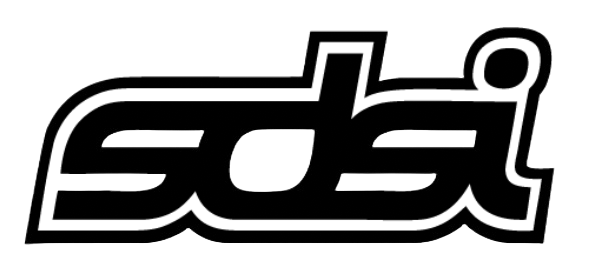It Takes..... a Community! (October Newsletter)
/Well, we had a stormy, 1 day, Fall season, and now we are back to idyllic San Diego…with rain scrubbed clear blue skies and a sunny blue ocean. For the most part, the SDSI business community is doing well and life is somewhat comfortable.
Unless you are homeless. There are 20,000 of us, “neighbors” as Father Joe noted. Each a human tragedy of some scope and scale. Shockingly, the population of unsheltered people has grown over 70% during the pandemic. The City, county and State are doing what they can, but the pace is slow.
Pat and Stephanie Kilkenny, long-time supporters of SDSI, have turned their energy and philanthropy, through their Lucky Duck Foundation, to address the challenges head on, now, not years from now. The LDF has erected the large tent structures you see down-town that house 300 plus people a night. LDF is approaching 1 million meals served to the needy.
At the SDSI Board of Director meeting Oct 26, Pat presented their winter “jacket” program, clever jackets that roll into a sleeping bag, providing warmth day and night. These jackets are built in a homeless industry and cost $125 each. LDF will distribute 3,000 jackets this winter.
I am happy, proud, to report that with Chairman Bill Walton and John Sarkisian’s leadership the SDSI Board of Director members pledged $22,800, enough for 182 jackets! Its really a great start, but it is a just a start. You can help too by clicking here (Luck Duck Foundation) and making a pledge of any amount. If you are going to forego the company Holiday party this year, why not consider donating the funds to the Luck Duck Foundation?
“Community” encompasses us all, fortunate and less so. We can all do better to help those who need it.
-Bob



![8559648-1632339338807-6d21dc932b39f[1].jpg](https://images.squarespace-cdn.com/content/v1/564655a7e4b0bc08c0869886/1632348500639-WWD7QOGE8VFHF4G9HKXW/8559648-1632339338807-6d21dc932b39f%5B1%5D.jpg)
![1olympic_mental_health_logo-1ade0514860c4f8a99346a4dc2e55256[1].jpg](https://images.squarespace-cdn.com/content/v1/564655a7e4b0bc08c0869886/1630014263771-AVVFAVYL09KSDXP3UYW2/1olympic_mental_health_logo-1ade0514860c4f8a99346a4dc2e55256%5B1%5D.jpg)
![another-change-4[1].png](https://images.squarespace-cdn.com/content/v1/564655a7e4b0bc08c0869886/1628106004934-GTKCMYA82SWY6S30NIMS/another-change-4%5B1%5D.png)

![8559648-1623964709051-c3999221c130f[1].jpg](https://images.squarespace-cdn.com/content/v1/564655a7e4b0bc08c0869886/1624491250397-UMBUUJ0C9PDIESGG4QAX/8559648-1623964709051-c3999221c130f%5B1%5D.jpg)
![depositphotos_91329484-stock-illustration-re-opening-soon-stamp[1].jpg](https://images.squarespace-cdn.com/content/v1/564655a7e4b0bc08c0869886/1622158569176-Q34E0BSEPXUFWMZ5PAUF/depositphotos_91329484-stock-illustration-re-opening-soon-stamp%5B1%5D.jpg)
![8559648-1621458367364-e5c878d79dbdd[1].jpg](https://images.squarespace-cdn.com/content/v1/564655a7e4b0bc08c0869886/1624491098255-OE7LVZU01L0LULS1PX3N/8559648-1621458367364-e5c878d79dbdd%5B1%5D.jpg)

![8559648-1619030060850-da58b562e6f4d[1].jpg](https://images.squarespace-cdn.com/content/v1/564655a7e4b0bc08c0869886/1620090659399-6NSD5YB6DA87Z2FICS3C/8559648-1619030060850-da58b562e6f4d%5B1%5D.jpg)
![8559648-1616610707430-fea65232f0da8[1].jpg](https://images.squarespace-cdn.com/content/v1/564655a7e4b0bc08c0869886/1620090391878-NL140NUGXB5B91UEYBM2/8559648-1616610707430-fea65232f0da8%5B1%5D.jpg)
![mask_in_office[1].jpg](https://images.squarespace-cdn.com/content/v1/564655a7e4b0bc08c0869886/1616714724486-375FE43RNFWD55F5P8WH/mask_in_office%5B1%5D.jpg)
![light-end-of-tunnel-370x247[1].jpg](https://images.squarespace-cdn.com/content/v1/564655a7e4b0bc08c0869886/1614292774602-H10876YESB8RISCC1ZHC/light-end-of-tunnel-370x247%5B1%5D.jpg)
![8559648-1613765522743-7ab4ce4cdd26d[1].jpg](https://images.squarespace-cdn.com/content/v1/564655a7e4b0bc08c0869886/1613958933635-S2FNO8MQWADDVGK8JK6Q/8559648-1613765522743-7ab4ce4cdd26d%5B1%5D.jpg)
![8559648-1613074301714-87c194ea562a6[1].jpg](https://images.squarespace-cdn.com/content/v1/564655a7e4b0bc08c0869886/1613958755880-HPQJSJVQ8NWEYPD6NATC/8559648-1613074301714-87c194ea562a6%5B1%5D.jpg)
![8559648-1612403354963-ee27cd758c5a3[1].jpg](https://images.squarespace-cdn.com/content/v1/564655a7e4b0bc08c0869886/1613958279802-ZKQTU00UY97H4RDULEWX/8559648-1612403354963-ee27cd758c5a3%5B1%5D.jpg)
![8559648-1611017556907-ef32efc71598d[1].jpg](https://images.squarespace-cdn.com/content/v1/564655a7e4b0bc08c0869886/1611945076137-Y4AHISSKPRMV3A3U1B70/8559648-1611017556907-ef32efc71598d%5B1%5D.jpg)





